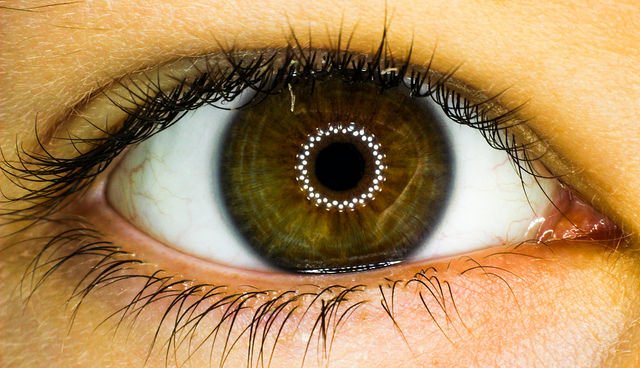credit: Kristina Jackson
The Rise of “Screen Eyes”
Hours spent on laptops, phones, and tablets can leave eyes gritty, sore, and unfocused. This cluster of symptoms—dryness, burning, blurred or double vision, headaches, neck and back discomfort—falls under computer vision syndrome. Remarkably, even three hours of daily screen time can trigger it for many people. Because the tear film destabilizes with prolonged staring and infrequent blinking, the surface of the eye dries out and becomes irritated.
Why Omega-3s Matter for Dry Eye
Omega-3 fatty acids, particularly EPA and DHA, influence the quality and stability of the tear film and calm surface inflammation. DHA helps cell membranes stay flexible, while EPA shifts inflammatory signaling toward a “quieter” response. Together, they can support more comfortable, longer-lasting tear coverage across the cornea—key for people who stare at screens.
Inside the Clinical Evidence
A three-month trial in heavy screen users
In a large randomized study published in Contact Lens and Anterior Eye, 478 adults with computer vision syndrome took either olive-oil placebo or 1,200 mg per day of combined EPA+DHA for three months. By the end, omega-3 users reported dramatic symptom relief, with most moving from “moderate” discomfort to minimal or none. Objective measures improved too: tear film break-up time lengthened and ocular surface cell health looked better under clinical grading. Placebo users did not show these gains.
Higher doses, faster relief
A companion trial from the same group tested a shorter course with a higher dose—2,400 mg/day EPA+DHA for about six weeks—and again found meaningful improvements in dryness scores and clinical tear tests versus placebo. A separate study (Kangari et al.) reported symptom reductions within 30 days at more modest intakes (~600 mg/day), suggesting benefit can begin at lower levels but may scale with dose and time.
What wasn’t measured—but still matters
These studies did not track the Omega-3 Index (the percentage of EPA+DHA in red blood cell membranes), a lab value that reflects how well your body is actually absorbing these fats. Given individual variation in absorption and baseline diet, measuring the Omega-3 Index can explain why some people need higher intakes to feel a difference.
How to Personalize Your Approach
Consider testing your Omega-3 Index
If your eyes stay dry despite supplementation, a simple finger-prick test can reveal whether your tissue levels are high enough to move the needle. Many people start around 4% (low) and feel better as they approach the cardioprotective 8% range—levels that also tend to align with ocular comfort in practice.
Build a practical routine
Aim for at least 1,000 mg per day of combined EPA+DHA from fatty fish or a quality supplement. Consistency over 6–12 weeks is important; higher intakes (1,200–2,400 mg/day) may accelerate relief, especially for persistent symptoms. If you prefer food, rotate salmon, sardines, mackerel, black cod, or trout several times a week and fill the gaps with a purified fish, krill, or algal oil.
Smart Habits That Support Your Eyes
Omega-3s work best alongside simple environmental tweaks. Add humidity to dry rooms, avoid fans blowing across your face, and use warm compresses to loosen meibomian oils that stabilize tears. Follow the 20-20-20 rule (look 20 feet away for 20 seconds every 20 minutes), blink deliberately during long tasks, and keep preservative-free artificial tears on hand for flare-ups.
The Bottom Line
For screen-related dry eye, omega-3s aren’t hype—they’re one of the few nutrition strategies repeatedly shown to improve both how your eyes feel and how they function on clinical tests. Commit to a daily EPA+DHA routine, give it several weeks, and consider checking your Omega-3 Index if progress stalls. Pair that with better blinking, short breaks, and a friendlier work environment, and your eyes will thank you.




